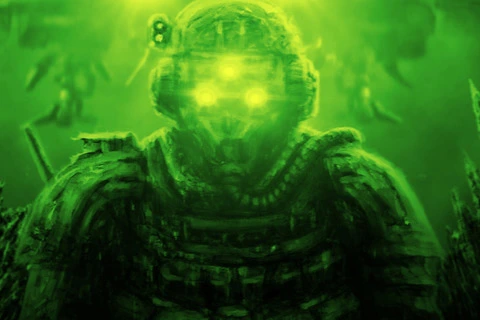Night Vision

Everyone knows that the best time to go ghost hunting is at night. See paranormal activity better with night vision goggles and lenses.
MIL-PRF-49065F
Night Vision Goggles, An/Pvs-5 ( )
Document Status: Active. Information and documents presented here are works of the U.S. Government and are not subject to copyright protection in the U.S. The source of these documents is the U.S. Department of Defense
MIL-PRF-49156B
Eyepiece Assembly, For Night Vision Goggles, An/Pvs-5( )
Document Status: Active. Information and documents presented here are works of the U.S. Government and are not subject to copyright protection in the U.S. The source of these documents is the U.S. Department of Defense
ISO 14490-8:2011
Optics and optical instruments - Test methods for telescopic systems - Part 8: Test methods for night-vision devices
ISO 14490-8:2011 describes test methods for determining the performance of night-vision devices as specified in ISO 21094.
SAE ARP 4168B-2017
Night Vision Goggle (NVG) Compatible Light SourcesNight Vision Goggle (NVG) Compatible Light Sources
This ARP covers three common light sources, incandescent, electroluminescent and light emitting diode that, when NVG filtered, can be used to illuminate NVG compatible aerospace crew stations. It is recognized that many other different light sources can also be used for this purpose. Also see 2.1.1 for other SAE documents that cover particular applications within the crew station environment. This ARP sets forth recommendations for the design of NVG compatible lighting, utilizing these light sources, that will meet the requirements of MIL-L-85762 Lighting, Aircraft, Interior, Night Vision Imaging System (NVIS) Compatible. This also includes the replacement document MIL-STD-3009: Lighting, Aircraft, Night Vision Imaging System (NVIS) Compatible. Although this ARP concentrates on lamp light sources for illumination, the information contained within this ARP may be directly applied to incandescent, electroluminescent and light emitting diode information display devices. Regardless of the light source, the focus of this document is the understanding that the radiometric energy that can be amplified by the Night Vision Goggles (NVG’s) must be filtered to such an extent that it will not impact the operational use of the NVG’s while still allowing sufficient visible (photometric) energy to be viewed by the pilot.
MIL-PRF-49157B
Objective Lens Assembly, For Night Vision Goggles, An/Pvs-5( )
Document Status: Active. Information and documents presented here are works of the U.S. Government and are not subject to copyright protection in the U.S. The source of these documents is the U.S. Department of Defense
SAE ARP 4169B-2014 (SAE ARP4169B-2014)
Night Vision Goggle (NVG) Filters
This SAE Aerospace Recommended Practice (ARP) discusses the desired characteristics of night vision goggle (NVG) filters that can be used with incandescent, electroluminescent (EL) and light emitting diode (LED) light sources to achieve NVG compatible lighting of aerospace crew stations. This document also discusses the parameters that need to be considered when selecting a night vision goggle/daylight viewing (NVG/DV) filter for proper contrast enhancement to achieve readability in daylight. The recommendations set forth in this document are to aid in the design of NVG compatible lighting that will meet the requirements of MIL-L-85762A and MIL-STD-3009.
